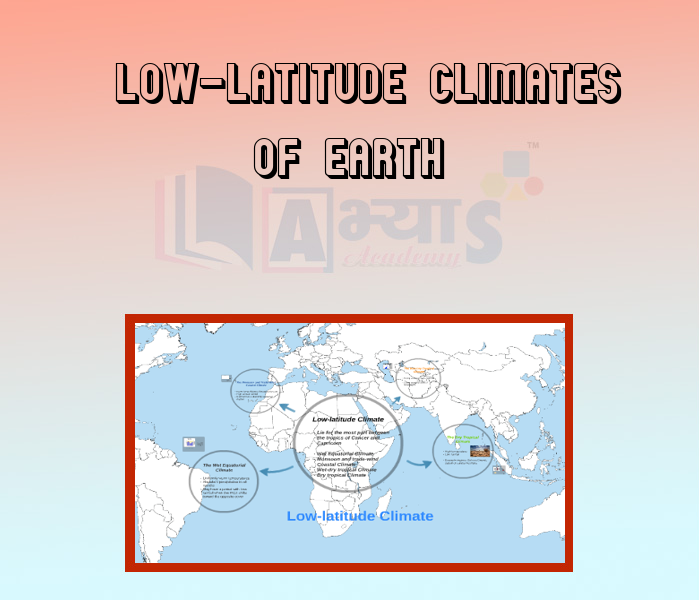Low-Latitude Climates Of Earth











Low-Latitude Climates Of Earth
Group I: Low-Latitude Climates: The climate of this group is determined by equatorial tropical air masses. It is further subdivided into a number of minor climatic zones, which are mentioned as under:
(A) Tropical Moist Climates - Rainforest
Average temperature: 18 °C (°F)
Annual Precipitation: 262 cm. (103 in)
Latitude Range: 10° S to 25 ° N
Global Position: Amazon Basin; Congo Basin of equatorial Africa; East Indies, from Sumatra to New Guinea
(B) Wet-Dry Tropical Climates - Savannah
Temperature Range: 16 °C
Annual Precipitation: All months less than o.25 cm (0.1 in)
Latitude Range: 15° to 25° N and S
Global Range: India, Indochina, West Africa, Southern Africa, South America and the North Coast of Australia
(C) Dry Tropical Climate - Desert Biome
Temperature Range: 16° C
Annual Precipitation: All months less than 0.25 cm (0.1 in)
Latitude Range: 15° - 25° N and S
Global Range: Southwestern United States and Northern Mexico; Argentina; North Africa; South Africa; and central part of Australia
Students / Parents Reviews [10]
My experience with Abhyas academy is very good. I did not think that my every subject coming here will be so strong. The main thing is that the online tests had made me learn here more things.

Hiya Gupta
8thA marvelous experience with Abhyas. I am glad to share that my ward has achieved more than enough at the Ambala ABHYAS centre. Years have passed on and more and more he has gained. May the centre flourish and develop day by day by the grace of God.

Archit Segal
7thAbhyas Methodology is very good. It is based on according to student and each child manages accordingly to its properly. Methodology has improved the abilities of students to shine them in future.

Manish Kumar
10thAbhyas is a complete education Institute. Here extreme care is taken by teacher with the help of regular exam. Extra classes also conducted by the institute, if the student is weak.

Om Umang
10thI have spent a wonderful time in Abhyas academy. It has made my reasoning more apt, English more stronger and Maths an interesting subject for me. It has given me a habbit of self studying

Yatharthi Sharma
10thMy experience was very good with Abhyas academy. I am studying here from 6th class and I am satisfied by its results in my life. I improved a lot here ahead of school syllabus.

Ayan Ghosh
8thAbout Abhyas metholodology the teachers are very nice and hardworking toward students.The Centre Head Mrs Anu Sethi is also a brilliant teacher.Abhyas has taught me how to overcome problems and has always taken my doubts and suppoeted me.

Shreya Shrivastava
8thIt was good as the experience because as we had come here we had been improved in a such envirnment created here.Extra is taught which is beneficial for future.

Eshan Arora
8thOne of the best institutes to develope a child interest in studies.Provides SST and English knowledge also unlike other institutes. Teachers are co operative and friendly online tests andPPT develope practical knowledge also.

Aman Kumar Shrivastava
10thBeing a parent, I saw my daughter improvement in her studies by seeing a good result in all day to day compititive exam TMO, NSO, IEO etc and as well as studies. I have got a fruitful result from my daughter.
